
Himself (archive footage)
In his essay film, Jerry Tartaglia, longtime archivist and restorer of the film estate of queer New York underground, experimental film, and performance legend Jack Smith, deals less with Smith’s life than with his work, analyzing Smith’s aesthetic idiosyncrasies in 21 thematic chapters. It's a film essay about the artist’s work, rather than a documentary about his life. An unmediated vision of Jack Smith, an invitation to join him in his lost paradise.

Love Thing captures the emerging multicultural spirit and personal freedom of the late 1970s with an outrageous attitude and experimental style. A work in progress now finally completed it's the last American musical comedy from that era which can be viewed today as a prophetic satire. Through its provocative, entertaining storyline highlighted by song and dance, the movie answers the burning question of our time, "What happens after the marriage?

Himself (archive footage)
In this entrancing documentary on performance artist, photographer and underground filmmaker Jack Smith, photographs and rare clips of Smith's performances and films punctuate interviews with artists, critics, friends and foes to create an engaging portrait of the artist. Widely known for his banned queer erotica film Flaming Creatures, Smith was an innovator and firebrand who influenced artists such as Andy Warhol and John Waters.
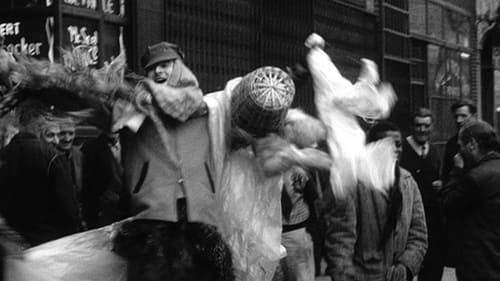
Made in response to the death of his friends Bob Fleischner and Jack Smith, who died within one week of each other in 1989, this feature includes footage from Jacobs’s Star Spangled to Death showing Smith perambulating through downtown Manhattan, as well as views of Fleischner from Jacobs’s 1961 short The Whirled.

The Spirit Not of Life But of Living
An examination of the history of the U.S. through archival footage and contrasting views of society, incorporating audiovisual material ranging from political campaign films to animated cartoons to children’s phonograph records, featuring Al Jolson, Mickey Mouse, the young Jack Smith, and a half-dozen American presidents.
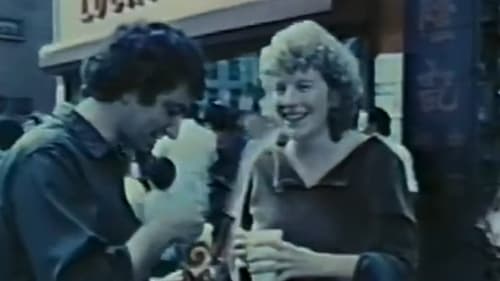
Self
Filmmaker Jonas Mekas films 160 underground film people over four decades.

Spirit of Death
Paul Mills is a miserable, lonely man leading a meaningless existence in a nameless city and has visions of the Spirit of Death waiting to collect him while having encounters with various people while seeking solace for his short life knowing it will end soon

“New York plays itself, as Taylor Mead and Winifred Bryan regale in pas de deux among the trashcans and the towers. The Studiedly Goofy and the Monumentally Grand are joined in masterly pas de don’t [...] The awed couple do battle with the status quo and teach the world to dance on the head of a bin. Rice detects real dignity in Bryan and amazing grace in Mead as they essay solitary promenades through the parks, subways and streets of a wintery New York landscape. Photographed and directed by Ron Rice, edited and scored by Taylor Mead.” –Edward Leffingwell

Dr. Shrinkelstein
A Nietzschian parable on the fate of innocence, THE TRAP DOOR follows the mishaps of Jeremy (John Ahearn) as he is fired by his boss (Jenny Holzer), gets laughed out of court by Judge Gary Indiana, loses his girlfriend to sleazy Richard Prince, is hustled by prospective employer (Bill Rice) and mauled by predatory bird-women. Finally, he seeks the help of a shrink (the legendary Jack Smith) who turns out to be the most demented of all.

Director
A documentation of a Jack Smith drag performance featuring a large red wig.

Inmate
Es Nochebuena, 1950 y un cuerpo carbonizado aparece sobre la nieve del jardín de la casa Butler. Es Wildfred Butler. Ha muerto completamente quemado sin que haya ningún indicio de muerte violenta. El caso se archiva como accidente fortuíto. Veintidós años después llegará un abogado con la orden, por parte del nieto de Butler, de vender la casa. Esta venta reabrirá viejas heridas del pasado en las fuerzas vivas del pueblecito de nueva Inglaterra.

"The question is, it is either going to be a stoned age or a new Stone Age" - Louis Brigante
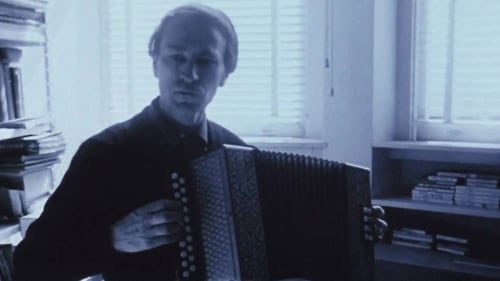
Self
An epic portrait of the New York avant-garde art scene of the 60s.

Writer
Smith's third feature film was originally titled "The Kidnapping of Wendell Willkie by the Love Bandit," in reaction to the 1968 Presidential Campaign. Willkie was a liberal Republican who ran against FDR in the 1940's. It mixes B&W footage of Smith's creatures with old campaign footage of Willkie. The climax of the work appears to be the "auctioning" of the presidential candidate at the convention. - Flicker

Director
Smith's third feature film was originally titled "The Kidnapping of Wendell Willkie by the Love Bandit," in reaction to the 1968 Presidential Campaign. Willkie was a liberal Republican who ran against FDR in the 1940's. It mixes B&W footage of Smith's creatures with old campaign footage of Willkie. The climax of the work appears to be the "auctioning" of the presidential candidate at the convention. - Flicker

Rose Courtyard
During its 1969 showings at the Elgin Theater, No President was preceded by the color short filmed according to Smith’s direction by photographer Don Snyder (who also shot slides during the same session). Smith appeared as his red-wigged, plastic-jawed, alter ego Rose Courtyard, seated in a wheelchair amid the detritus of the Plaster Foundation. The film was accompanied by two rounds of Kate Smith singing “God Bless America”. Dressed in a red satin gown, clutching a bouquet of dead roses, Rose is finally moved to stand up and salute. The film was found in a can labeled “Song for Rent”, title of a 1971 mixed media production in which Smith appeared. (J. Hoberman)

Himself
Iimura creates a short self-portrait as well as brief portraits of five of his peers: Brakhage, Vanderbeek, Smith, Mekas and Warhol. In each portrait, Iimura attempts to copy the styles and traits of each artist (Vanderbeek's constantly moving camera; Mekas' experiments with film speed; Warhol's use of flashes of white against a black background), while briefly commenting on the images being shown. The film serves effectively as an introduction to the film styles of these artists.

Director
During its 1969 showings at the Elgin Theater, No President was preceded by the color short filmed according to Smith’s direction by photographer Don Snyder (who also shot slides during the same session). Smith appeared as his red-wigged, plastic-jawed, alter ego Rose Courtyard, seated in a wheelchair amid the detritus of the Plaster Foundation. The film was accompanied by two rounds of Kate Smith singing “God Bless America”. Dressed in a red satin gown, clutching a bouquet of dead roses, Rose is finally moved to stand up and salute. The film was found in a can labeled “Song for Rent”, title of a 1971 mixed media production in which Smith appeared. (J. Hoberman)

At the court of the Yellow Emperor, the Majoon Traveler & Lady Firefly appear in the Hall of Unconscious Magnetism.

Director
An addendum to Jack Smith's NORMAL LOVE
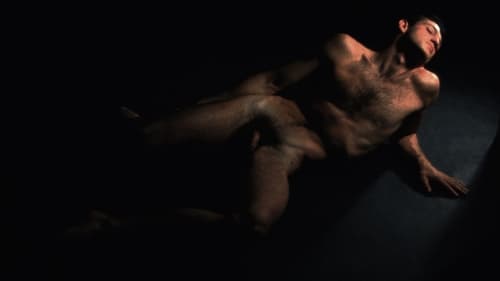
Orpheus
Prometheus, on an Odyssean journey, crosses the Brooklyn Bridge in search of the characters of his imagination. After meeting the Muse, he proceeds to the "forest." There, under an apple tree, he communes with his selves, represented by celebrated personages from the New York "underground scene" who appear as modern correlatives to the figures of Greek mythology. The filmmaker, who narrates the situations with a translation of Aeschylus' Prometheus Bound , finds the personalities of his characters to have a timeless universality.

The story of Joan of Arc as applied to the present revolution in arts and more. The Gothic is applied to the War in Vietnam. The film is experimental in the sense that in it the visual becomes tactile.

Himself
... with real-life portraits of Jayne Mansfield, Frak O'Hara, Ruth Ford, Ned Rorem, Virgil Thomson, Claes Oldenburg, Roy Lichtenstein, William Burroughs, Andy Warhol, Rudy Gernreich, Jonas Mekas and others.

I Was a Male Yvonne De Carlo is one of several films and slide shows that feature Smith as a mock celebrity. It opens with the excerpt from No President originally called "Marsh Gas of Flatulandia" - several minutes of black and white footage of steam escaping from manholes segues to an interior scene of various creatures emerging from dry ice vapors - then shifts to show the filmmaker, clad in a leopard skin jump suit, attended by a nurse as he sits amidst the detritus of his duplex loft. A fan presents him with a black-and-white glamour shot to autograph as Ondine, dressed entirely in black leather, snaps his picture. Violence erupts as the nurse takes out a whip to discipline the star's fans. When a female creature pulls out the same dagger depicted in the glamour shot, Smith jumps up and shakes the weapon from her hand. The action is post-scripted with footage of a steam shovel patrolling the rubble where the Broadway Central hotel once stood.

Director
I Was a Male Yvonne De Carlo is one of several films and slide shows that feature Smith as a mock celebrity. It opens with the excerpt from No President originally called "Marsh Gas of Flatulandia" - several minutes of black and white footage of steam escaping from manholes segues to an interior scene of various creatures emerging from dry ice vapors - then shifts to show the filmmaker, clad in a leopard skin jump suit, attended by a nurse as he sits amidst the detritus of his duplex loft. A fan presents him with a black-and-white glamour shot to autograph as Ondine, dressed entirely in black leather, snaps his picture. Violence erupts as the nurse takes out a whip to discipline the star's fans. When a female creature pulls out the same dagger depicted in the glamour shot, Smith jumps up and shakes the weapon from her hand. The action is post-scripted with footage of a steam shovel patrolling the rubble where the Broadway Central hotel once stood.

Director
A tropical island fantasy.

God
Part of the Dirt Trilogy

soothsayer
Egotistical faded star Hedy Lamarr visits a plastic surgeon to be transformed into the "14-year-old girl" she believes herself to be. She is then caught shoplifting by Mary Woronov and is put on trial, with Tavel as the judge and her five ex-husbands the jury. Hedy remains self-centered and detached throughout, posing and primping and bursting out renditions of "I Feel Pretty" and "Young at Heart."

Director
Respectable Creatures is an unusual blending of Jack Smith's first known film, Buzzards over Baghdad, with stray images from Normal Love, concluding with material which he shot at Carnaval in Rio.

Director
A sort of addendum to Smith's second feature, NORMAL LOVE, but which stands on its own as an anarchic ode to (and explosion of) pop culture, featuring none other than Tiny Tim.

Self
The films were made between 1964 and 1966 at Warhol's Factory studio in New York City. Subjects were captured in stark relief by a strong key light, and filmed by Warhol with his stationary 16mm Bolex camera on silent, black and white, 100-foot rolls of film at 24 frames per second. The resulting two-and-a-half-minute film reels were then screened in 'slow motion' at 16 frames per second.

Shot at Warhol's Silver Factory, Camp features a group of Superstars putting on a "summer camp" talent show complete with singing, dancing, jokes, poetry, and Gerard Malanga as master of ceremonies.

Two nuns take a bath, then meet a sailor on the Staten Island Ferry.

16mm, color, silent

A phantasmagoric exploration into the violence we house within ourselves.

Himself
Part of Andy Warhol's Screen Tests series. Filmmaker and performance artist Jack Smith.

A documentary on the beginnings of the cultural revolution on the Lower East Side, New York.

Self
This compilation of Gerard Malanga's short films consists of a collection of extremely rare footage and film portraits providing candid and interesting glimpses of Bob Dylan, Salvador Dalí, Jane Fonda and The Velvet Underground among other 1960s icons and featuring original music by Angus MacLise, who was the first drummer to perform with The Velvet Underground.

Batman / Dracula
Batman Dracula is a 1964 black and white American film produced and directed by Andy Warhol, without the permission of DC Comics. The film was screened only at Warhol's art exhibits. A fan of the Batman series, Warhol made the movie as a homage. Batman Dracula is considered to be the first film featuring a blatantly campy Batman. The film was thought to have been lost until scenes from it were shown at some length in the documentary Jack Smith and the Destruction of Atlantis.
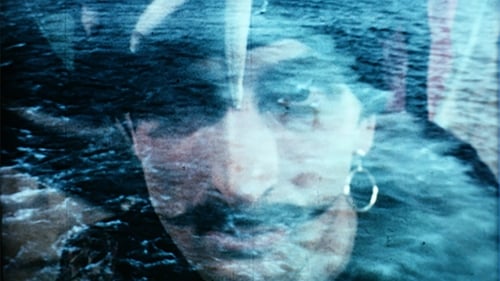
Ron Rice's Chumlum is one of those films in which the conditions of its construction are integral to the experience of watching it. It is a record of a cadre of creative people having fun on camera, playing dress-up, dancing, flirting, lazing around.

Himself
Little Stabs at Happiness is a collection of silent shorts Jacobs shot from the period of 1959-1963. Jaunty tunes (and a somber reflection) accompany the footage.

Director
Two men dressed as children jump up and down, ad nauseum

Director of Photography
Polémico filme rodado en blanco y negro, tildado de obsceno en su época, cuyo tema principal es la ambigüedad sexual y que reúne a un grupo de andróginos, travestis y drag queens en una orgía. "Flaming Creatures", referencia indiscutible del cine experimental de los años 60, es la única película que nos ha quedado de Jack Smith, autor de varios cortos y considerado precursor del cine de Andy Warhol.

Editor
Polémico filme rodado en blanco y negro, tildado de obsceno en su época, cuyo tema principal es la ambigüedad sexual y que reúne a un grupo de andróginos, travestis y drag queens en una orgía. "Flaming Creatures", referencia indiscutible del cine experimental de los años 60, es la única película que nos ha quedado de Jack Smith, autor de varios cortos y considerado precursor del cine de Andy Warhol.

Producer
Polémico filme rodado en blanco y negro, tildado de obsceno en su época, cuyo tema principal es la ambigüedad sexual y que reúne a un grupo de andróginos, travestis y drag queens en una orgía. "Flaming Creatures", referencia indiscutible del cine experimental de los años 60, es la única película que nos ha quedado de Jack Smith, autor de varios cortos y considerado precursor del cine de Andy Warhol.

Writer
Polémico filme rodado en blanco y negro, tildado de obsceno en su época, cuyo tema principal es la ambigüedad sexual y que reúne a un grupo de andróginos, travestis y drag queens en una orgía. "Flaming Creatures", referencia indiscutible del cine experimental de los años 60, es la única película que nos ha quedado de Jack Smith, autor de varios cortos y considerado precursor del cine de Andy Warhol.

Director
Polémico filme rodado en blanco y negro, tildado de obsceno en su época, cuyo tema principal es la ambigüedad sexual y que reúne a un grupo de andróginos, travestis y drag queens en una orgía. "Flaming Creatures", referencia indiscutible del cine experimental de los años 60, es la única película que nos ha quedado de Jack Smith, autor de varios cortos y considerado precursor del cine de Andy Warhol.

Madame Nescience
Un hombre toquetea objetos, se mira en el espejo, se viste con distintas ropas, hace muecas a la cámara. Mientras, su voz narra momentos de desesperación, cita sentencias filosóficas y canciones infantiles y cuenta las historias de un niño solitario y una mujer que desea abandonarse a la perversión.

Self
Andy Warhol film.
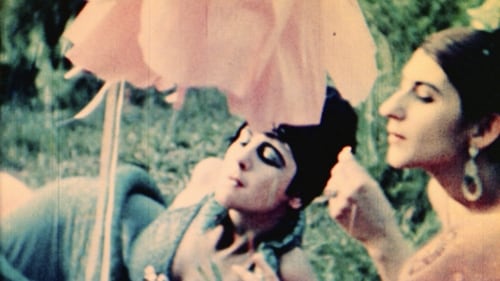
Director
The feature length Normal Love is Jack Smith’s follow up to his now legendary film Flaming Creatures. This vivid, full-color homage to B-movies is a dizzying display of camp that clearly affirms Smith’s role as the driving force behind underground cinema and performance art of the post-war era. The cast includes Mario Montez, Diane de Prima, Tiny Tim, Francis Francine, Beverley Grant and John Vaccaro. Smith was known to constantly re-edit the film, often during screenings as it was still unspooling from the projector. This print has been restored under the supervision of Jerry Tartaglia and is provided by Filmmakers Co-operative in New York City.

Fairy Vampire
Shot in Provincetown in the summer of '61 with the goal of funding a larger project, the film was never completed due to a violent argument between actor Jack Smith and director Ken Jacobs shortly after the shooting began. A title card explains that Smith 'would've starred as the Fairy Vampire.'

Director
Shot in 1959, Scotch Tape is Jack Smith's first film -- a joyous, three-minute romp, in color, using Peter Duchin's rhumba "Carinhoso" for its soundtrack. Three young men merrily bop through the wreckage of razed buildings at the site of what would become Lincoln Center. Apparently, Scotch Tape was never edited and, instead, was cut in the camera by Smith, combining long shots and close-ups while filming mostly from overhead. The title comes from a small strip of scotch tape that was accidentally stuck on the camera and so is visible in the lower-right corner of the frame throughout the film.

Jack Smith descends a fire escape in a makeshift "Arabian" costume and improvises increasingly frenetic choreography.

Cult leader
Short film with Jack Smith as the mysterious leader of an even-more-mysterious cult, garbed in pseudo-papal regalia and adorned with jewelry and makeup. His followers do his bidding by abducting and cross-dressing an unsuspecting mailman. Smith launches a processional and is soon joined by real neighborhood children in the streets of Lower Manhattan. Eventually, the police came along and shooting ends, but Ken Jacobs gets an overhead shot of Smith trying to explain himself to the cops.



















